|
|
 Jen Jen |
 |
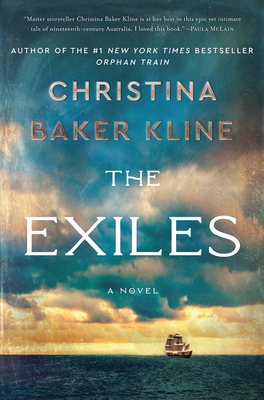
|
|
I’ve been on a bit of a tear with audiobooks! Except for Women of the Copper Country and The All-Night Sun, I listened to all the books below on libro.fm.
The Exiles
Christina Baker Kline
If you’ve been wondering if the author of The Orphan Train could write another book you’d love as much, worry not. The Exiles is historical fiction, focused on women prisoners in Australia’s penal colonies of the 1800s. Kline has created characters you would swear are real—young women whose unfortunate circumstances land them in very unfortunate places. For example—Evangeline, the only child of a vicar who passed away finds work as a governess in a wealthy home. One of the family’s good-looking, charming sons woos Evangeline, impregnating her. When a fellow household staff finds the family ruby ring he gave to Evangeline, she is accused of theft. In frustration, Evangeline pushes the tattletale staff down the stairs and is then accused of attempted murder. I’m listening to this on audio and the narrator, who must be a native Australian, is excellent. |
| |
|

|
|
Monument
Natasha Trethewey
After listening to Memorial Drive last month, I had to dive into poetry by the author. I’m glad I read the memoir first—while the poetry is excellent on its own, there’s a deeper level of understanding of the poems knowing the author’s story.  This collection is both new poems and previously published poems. If you haven’t discovered this two-time U.S. Poet Laureate and Pulitzer Prize winner, I recommend you do! This collection is both new poems and previously published poems. If you haven’t discovered this two-time U.S. Poet Laureate and Pulitzer Prize winner, I recommend you do!
|
| |
|

|
|
Intimations
Zadie Smith
This collection of personal essays is the first book I’ve read that talks about the events of 2020. The essays, written during lockdown, are about family, work, writing, reading, and life in general. Smith’s essays are concise yet have great depth. By far, I found the section titled Postscript: Contempt as a Virus (part of a larger essay called Screengrabs) the most powerful. In it, the author applies the language of disease and its spread to racism. This little collection of essays is a small, inexpensive book, but I would pay triple the price of the book for this one 10-page section. For audiobook listeners, the author reads the essays herself and it’s fantastic. |
| |
|
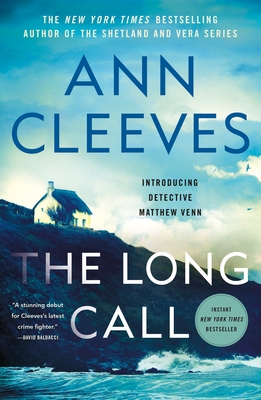
|
|
The Long Call
Ann Cleeves
This is the first book Cleeves’ new series, Two Rivers. The reader meets Detective Matthew Venn as he stands near (but not a part of) his father’s funeral. (After abandoning the church of his youth, a strict evangelical sect, and his parents dream of him becoming a pastor, Matthew was shunned by his family.) Shortly after the funeral, Matthew receives a call about a dead body and The Long Call is off and running. The mystery itself is intriguing and compelling, but the real meat of this story is the characters. Matthew is sharp, compassionate, and inquisitive. His husband Jonathan is artistic and not-so-tidy. One of Matthew’s detectives is Jen Rafferty, a spunky single mother, quite different from Matthew and yet the two work well together and have a mutual respect for each other.
Know who else really likes Ann Cleeves’ books? Author Louise Penny! |
| |
|

|
|
The Women of the Copper Country
Mary Doria Russell
This historical fiction covers history I was unfamiliar with – the copper miners strike in Calumet, Michigan in 1913–1914. Much of the strike was organized and orchestrated by women, including a woman known as Big Annie (she was over 6 foot tall.) The narrative alternates between several characters—Eva (fictional), Annie (real person), and James MacNaughton, owner of the copper mine (and a real person). A wonderful cameo appearance is made by Mother Jones and even Jane Addams gets a mention. For readers interested in early 20th century American history or just a good story, I highly recommend this book. Both the Beagle Men’s and Beagle Women’s books groups have read and discussed this book—it contains lots to discuss!
|
| |
|
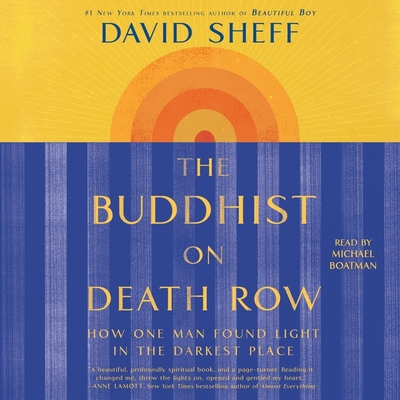
|
|
The Buddhist on Death Row
David Sheff
This is a biography of Jarvis Jay Masters, who is currently on death row in San Quentin prison. Masters was not a Buddhist when he entered San Quentin, but is now. (Psst, for fans of Pema Chodron, like me, there’s a fair amount of Pema in this book.) Sheff details Masters’ life, which entailed a fair amount of poverty, family dysfunction, and bad luck. It’s a blend of a look at the American penal system, one man’s story, and faith/meditation. I tore through it in two days. |
| |
|
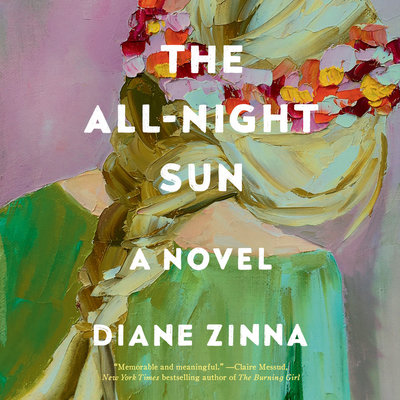
|
|
The All-Night Sun
Diane Zinna
This is a debut novel and I hope there are more books coming from the author! Lauren is a young woman working as an adjunct professor at a small college on the east coast. She loves teaching and her students (to the annoyance of some of her colleagues.) Lauren is pretty much alone in the world—her parents died together in an accident when she was 18 years old. Her parents were older-than-average parents and did not come from big families themselves, so there is no one left for Lauren. At work, Lauren teaches international students. One of her students is Siri, an 18-year-old from Sweden who, like Lauren, has suffered the deaths of both parents, although she has siblings. Lauren and Siri form a friendship that probably breaches teacher-student boundaries. When Midsommar approaches, Siri invites Lauren to come to Sweden with her for the holiday. Lauren accepts, but once in Sweden, she sees a far different side to Siri than she has in the classroom. The writing and the characters are well-done and I’m thoroughly enjoying book. |
| |
|
|
|
|
|
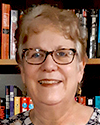 Sally Sally |
|
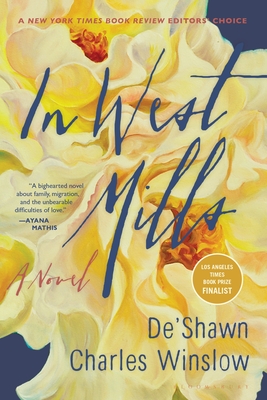
|
 |
Over the summer, I’ve read books for book club (we meet every two weeks) alternating with other books. In August, the “other” books all seem to have been mysteries!
In West Mills
De'Shawn
In the 1940’s, the father of Azalea Centre, known as Knot, found her a teaching job in the tiny town of West Mills, North Carolina, effectively putting distance between her and her family. Knot, determined to live life on her own terms, was much more interested in moonshine, serial relationships, and reading the works of Charles Dickens than she was in teaching. Twice, Knot became pregnant by men who were no longer in town. Twice, her neighbor and friend, Otis Lee Loving, found a home for her baby. Knot’s children weren’t the only characters in the book whose parentage was kept secret. Both Knot and Otis Lee have complicated stories. The book takes place over decades, exploring a life-giving platonic friendship of great tenderness. Knot is prickly, but she’s an interesting character, and you’ll be thinking about her and her neighbors, friends, and family long after you’ve finished the book. |
| |
|

|
|
Unsheltered
Barbara Kingsolver
Barbara Kingsolver is an author with an acute social conscience and is a heck of a storyteller. Both are on display in Unsheltered. She says of the book, “We’re living through a paradigm shift—a time when we have to question some basic assumptions about how we live. Unsheltered speaks to this moment and asks where we might be headed.”
Unsheltered is the story of two families who live on the corner of Sixth and Plum in Vineland New Jersey, two centuries apart, but both in times of major cultural shifts.
The contemporary family, the Knoxes, have inherited the rundown house at a time of great stress in their lives. After years of responsible middle-class life, Willa and Iano have lost their jobs, and are nearly destitute while responsible for Iano’s father, their grown children, and a grandchild.
Willa begins researching the history of the house, hoping that it will be noteworthy enough that the local historical preservation society will take an interest in funding the necessary repairs.
She discovers a kindred spirit named Thatcher Greenwood lived in the house in the 1880’s. Greenwood was a science teacher, forbidden by his school to speak of the theories recently published by Charles Darwin. His friendship with the brilliant scientist next door and clashes with the town’s powerful leaders led to problems with his new wife and social climbing mother-in-law.
The book’s chapters alternate between Willa and Thatcher, each living in precarious times, similar to our own. The Sister Wolf group will discuss this book on September 9.
|
| |
|
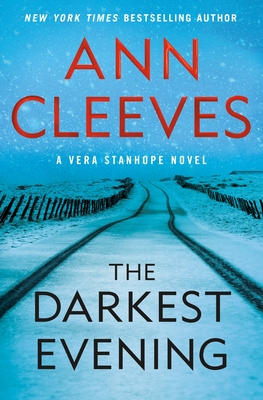
|
|
The Darkest Evening
Ann Cleves
Okay, I may be the last person ever to have read a Vera Stanhope mystery (and I haven’t seen the TV series, either), and I have to say, I liked this one. A lot. While Vera is driving home on a snowy winter night, she comes upon a car which has skidded off the road. When she stops to help, she finds the driver’s side door open. There’s no sign of the driver, but a young child is strapped into a car seat in the back seat. Vera takes the child, and sets off in the storm for help. As luck would have it, the closest house is the grand estate where her father grew up. With that, the mystery is off and running. I don’t want to throw in any spoilers, so I’ll just say the plot was enjoyably convoluted and it was easy to see that Vera’s colleagues and their interactions must add to the enjoyment of the series.
|
| |
|

|
|
All the Devils are Here
Louise Penny
What would late summer/early fall be without a new book in the beloved series featuring Chief Inspector Armand Gamache? In the latest, number 16 in the series, Armand and his wife, Reine Marie, are in Paris for the birth of their daughter’s baby. It’s a family reunion, because their son and his family also live in Paris, and Armand’s godfather is in the city as well. As the group leaves the bistro where they ate dinner, Stephen, the godfather, is run down in what seems to be a deliberate attempt to harm him. This is a character-driven series, and it’s interesting to see Gamache out of Three Pines and Canada and away from the colleagues and friends whose interactions are so important. In this book, the attention is on members of the Gamache family and their interactions. I think this is the best book in the series—so far!
|
| |
|

|
|
Big Sky
Kate Atkinson
I read Kate Atkinson’s first book, Behind the Scenes at the Museum, when it came out 25 years ago (how can THAT be?) and I have read many of her subsequent books. She occasionally writes mysteries featuring Jackson Brodie, and I recently listened to the fifth in that series. It’s been ten years since the last Brodie book, and I found him older but the same iconoclast. The structure of this book was interesting. For the first third of the book. Atkinson focuses on a number of seemingly unrelated people in turn. They’re interesting, but I couldn’t see where everything was going or how everyone was connected. Suddenly, something happens, and Brodie swings into action. After there’s resolution of one element of the plot, the book continues, and Atkinson revisits the many characters and ties up the loose ends. Generally, I don’t like that, but it seemed appropriate here. The book is so plot-driven, that I don’t want to give it away. I listened to the book on Libro.fm.
|
| |
|
|
|
|
|
| |
|
|
|
|

Bob |
|
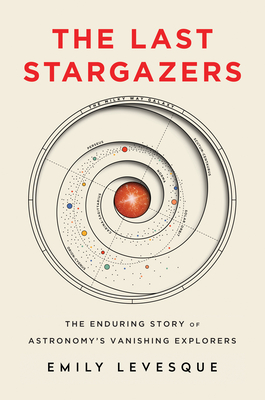
|
|
The Last Stargazers
Emily Levesque
I’m not a person who at a tender age got hooked into making my own telescope (polishing mirrors and all) and therefore did not do a lot of stargazing.… I kind of like sleeping at night. Nonetheless, I found this book an interesting walk with the author through her life as an Astrophysicist. Not surprisingly, I found her explanations of the development of telescopes and how they work very educational. Did you know that some of the older, large telescopes had a location INSIDE the fat end of the scope (as opposed to the skinny end where you look in) where observers would work with glass photographic plates? And the descriptions of the site locations for the bigger telescopes were interesting. Not because they are mostly on mountain tops but the trade-offs of being remote, often in thin air (better viewing with less stuff in the way), cold and, of course, in total darkness.
The author interviewed many, many of her associates and this provided a lot of great material for stories about astronomy and astronomers. There is a bit of physics to take in, but a person with an interest in astronomy will be able to work their way through it.
|
| |
|
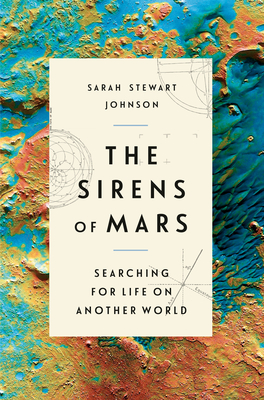
|
|
The Sirens of Mars
Sarah Stewart Johnson
I think I was drawn to this book by the title. The term “sirens” took me back to my high school readings of mythology and maidens luring sailors to their demise. How does this fit? Well, it turns out very well. I found the book interesting as the author wove writings from her first experiences with rocks to her eventual seeking Mars here on earth. I always thought that people studied Mars either through crude telescopes or Mars rovers like Opportunity, just to see what was there. This book brings out the idea of looking for signs of life other than on earth. Johnson discusses the “canals” on Mars and how theorists were sure this indicated an advanced life-form, only to find with time that they were really shadows. But nonetheless, people sought more information, again driven by a search for life-forms. What they discovered both on Mars and surprisingly, on Earth, makes for a really good read. |
| |
|
|
|
|
|

Gail |
|
 |
|
|
| |
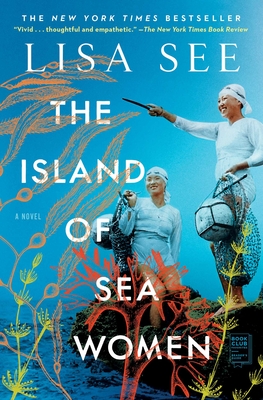
|
|
The Island of Sea Women
Lisa See
The author has written a number of bestselling books about women and their friendships. This story takes place on the Island of Je-ju, a part of Korea. The Haenyeo are women who make their living diving into the sea and harvesting sea animals to sell. Their men stay at home to cook and care for the children. The timeline covers the time when Young- Sook begins to learn to dive until she is an old women who still loves the sea. Her best friend, Mi-ja, is like a sister to her until a horrific tragedy happens in their lives and pushes their relationship to the breaking point. Young-Sook says she will never forgive. The story is based on real-life events on the Island of Je-Ju. This an intense story. I urge you to stick with it as it will not disappoint.
|
| |
|

|
|
The Heavens May Fall
Allen Eskins
Wow! I may become a mystery fan yet. Allen Eskins keeps you on the edge of your seat from page one to the finish. Jennavieve Pruitt has been murdered; tabbed in the neck with a dagger. Detective Max Rupert is sure the husband did it. But he was in Chicago at a conference. Could he have somehow driven back to Minneapolis, murdered his wife, and then returned to Chicago for his morning meeting? Professor Boady Sanden has agreed to come out of retirement to defend his friend Ben Pruitt. The sister could also be a suspect as there are millions of dollars involved. And then there is Jennavieve's partner, who may be her lover! Eskins is a Minnesota writer who is also a defense attorney. He has an easy way of explaining the ins and out of the judicial system so the reader has no trouble following the trial. Try Eskins, you'll like him. |
| |
|

|
|
Birds of Minnesota
Stan Tekiela
Jennifer at Beagle and Wolf says bird books are a hot item this summer. I think we're all staying closer to home, taking walks and noticing the birds more than usual. This field guide by Tekiela is pocket size so easy to carry with you. The photographs of each bird species are terrific. This edition is a revision which reflects the changes in the range maps where the birds are found in Minnesota due to changes in the climate. Also, birds are located within the book by color so you can quickly identify them. It's not too late to purchase a book this year, as soon the fall migrations will be starting. And it's time to get your feeders up for winter feeding. We keep our feeders up all summer, taking them in at night so the bears don't get them. We've enjoyed goldfinches and purple finches all summer, birds which we haven't had before. I think this is also a good guide for new watchers. Check it out. |
| |
|
|
|
|
|
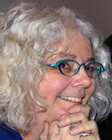
Hannah |
|
 |
|
|
|

|
|
Birds of a Feather
Jacqueline Winsprear
Sometimes you can judge a book by its cover. There’s nothing flashy or lurid about the Maisie Dobbs mysteries. They are British in the Upstairs Downstairs mode, but set after WWII, when this illustration style was in fashion. Maisie is a tidy, intense, caring person who needs some personal growth. The book starts sort of slow, but by the end the threads pull together and all’s well.
|
| |
|
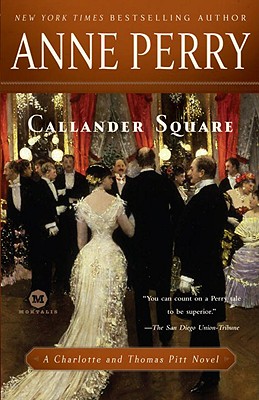
|
|
Callander Square
Anne Perry
Workmen are planting a shrub in a posh Victorian London community garden and discover the remains of a human baby. The gentry assume a servant girl “got herself pregnant,” as if no man was to blame, and as if it had to be a servant. Police Inspector Pitt interviews the residents, but his upper-class wife and her sister (who married a “gentleman”) involve themselves. If you enjoy exploring of life of the classes in these old homes, this one’s for you. And it kept me guessing until the very end. |
| |
|

|
|
The Warden
Anthony Trollope
I was going to read the third Charlie Lovett book next, but it turns out that it’s about Trollope’s Barchester novels. Trollope is a cross between Austen and Dickens. Now, I am a huge fan of Trollope’s Pallister novels, set among the British aristocracy and national politics of the period. I was turned on to them by a BBC dramatization, and have read them several times. But somehow, I never picked up the Barchester books, although I inherited a set years ago. So, I decided the time has come.
Trollope’s writing creates very human people struggling with relatable sorts of situations. Many of the Barchester characters are associated with the Victorian Church of England. The church is undergoing changes: there’s conflict between traditional and puritanical forces. The Warden is the first book in a series of six. It’s a small book, a good way to test whether you want to go on.
The warden is a kind, gentle soul, a cleric who takes tender care of twelve impoverished old men in a “hospital” set up years ago. He and his daughter live on the grounds, in a very nice home. However, the daughter’s beloved Mr. Bold discovers that the terms of the hospital’s endowment make the 800 pounds wage her father receives perhaps inappropriate. The Warden is crushed. He had no idea he was doing anything wrong, but becomes a national news story.
This reminds me of so many people today, people who have always thought they were good but now are being told that they are racist or otherwise in danger of being cancelled. I found it very useful in helping me think about how I feel about thes
|
| |
|

|
|
Barchester Towers
Anthony Trollope
The second in the Barchester series is more like the Pallister books: I’m really hooked now.
One of the things I enjoy about Trollope is the way he does the literary version of breaking the fourth wall. He talks directly to us, his readers, about what he’s doing in a way that some find off-putting but I find charming. It’s like he’s inviting me in.
If you aren’t aware of Trollope you certainly aren’t alone, but he does have an enduring audience. Here’s an excellent New Yorker article titled “Trollope Trending.” Like I said before, he’s a cross between Austen and Dickens, so if you like either of them, I recommend that you give Trollope a try.
|
| |
|

|
|
So Big
Edna Ferber
Ferber wrote the novels Showboat and Giant, both familiar from movies. She also wrote plays with George Kaufman, like my favorite Stage Door. However, So Big is the novel that won a Pulitzer Prize. It describes in detail life in turn of the century Chicago. A young woman was raised by her gambler father and wanted her life to be an adventure. However, she ends up on a truck farm, supplying food to the city folk she once lived among. She plays the toddler game (how big are you, sooo big!) with her son so often that she starts calling him Sobig. As she and Sobig grow through the years, Ferber makes an impactful statement about what makes a person’s size. |
| |
|
|
|
|
|
| |
|
|
|
|

Tim
|
|
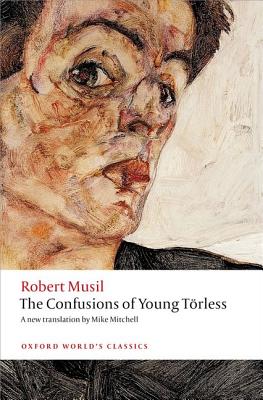
|
|
Young Törless
(Also known as The Confusions of Young Törless)
Robert Musil
Young Törless, Musil’s first novel, was published in 1906. Törless is a young man attending an exclusive military school in rural Austria in the very early 1900’s. His family is solidly conservative minor gentry, and the school reflects those values and prejudices. Musil has written a ‘coming of age novel’ but one of rare depth and scope. Unblinkingly, Musil has Törless discover and fumble his way through the awakening of adolescent sexuality, being constrained by the school’s isolation, misinformation, and social prudishness. How does a young man develop in a well-rounded balanced manner, without objective, accurate information and counsel? Left to their own devices, is it any wonder that Törless and his friends stumble into unwholesome pursuits… pursuits that may even inflict pain? This is the metaphor Musil expands and applies to “life” in general, and he does it elegantly. No wonder that this book was so acclaimed immediately after it was published in pre-WWl Europe.
Note: although the book is out of print, copies are available on the used book market.
|
| |
|

|
|
Habits of the House
Fay Weldon
Fay Weldon was the screenwriter for the pilot of the Masterpiece Theatre series Upstairs Downstairs. This book is the first of three novels in a series I knew nothing about. It begins in 1899, just after the London Season has ended. One morning (too early for the household) the Earl of Dilbern’s man of business, Mr. Baum, knocks on the front door to inform the Earl that his South African gold mine has been flooded by Boer troops. The investment was the Earl’s last, desperate, all-or-nothing gamble to recover the family fortunes and now they’re ruined, unless—and we’re off! If you enjoyed Upstairs Downstairs, Downton Abbey, or Duchess of Duke Street, here’s an entirely new cast of characters… enjoy! |
| |
|
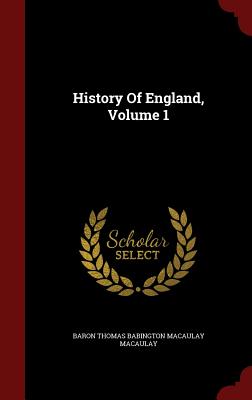
|
|
History of England
Thomas B. Macaulay
I have heard about these books for years and years, and would never have come to them on my own initiative, but by accident, they miraculously came to me. (One of those auspicious accidents that bring the perfect book to one at the perfect time.) I picked up Volume #1 one morning at 8:30, as I sat down to my first cup of coffee, and when I looked next at the time, it was 1:30 pm. Now I love history—no mistake—and history, related with anecdote, annotated reflections and beautifully written prose is a treat, as well as an education. The books holds up 170 years after publication, and I have to wonder how many contemporary writers of history, are able to remain relevant, objective, and ‘models of style’? Not many, I’ll hazard.
…”when the kingly office is regarded with love and veneration, but the person who fills that office is hated and distrusted, it should seem that the course which ought to be taken is obvious. The dignity of the office should be preserved; the person should be discarded”
Vol. #1 – p.86 – ref. Charles 1st.
|
| |
|
|
|
|
|
| |
|
|
|
|
Guest Review by Rachel
Note: this review was published in the Park Rapids Enterprise on August 29, and is reprinted with the author’s permission. |
|

|
|
Toxic: Heal Your Body from Mold Toxicity, Lyme Disease, Multiple Chemical Sensitivities, and Chronic Environmental Illness
Neil Nathan
Within the past year a colleague from a professional on-line forum highly recommended Toxic: Heal Your Body from Mold Toxicity, Lyme Disease, Multiple Chemical Sensitivities, and Chronic Environmental Illness; I promptly special ordered it from our local independent bookstore then it sat on my medical to-read pile until a patient reiterated what a fabulous resource this has been for her struggle with mold and chronic Lyme. As my deadline for this article rapidly approached, I finally perused Dr. Nathan’s treatise on what he terms “complex medical problem solving”. The text is written for both lay people and those with a medical background; the reader is forewarned about the highly technical sections, but these sections are not integral for understanding the overall concepts. “This book is not intended to be a treatment manual, but rather a starting point for understanding these complicated maladies and a catalyst for initiating progress during the medical journey.” (Page 13)
Dr. Nathan writes with wit, his voice is very down-to-earth, and he gives practical analogies to help understand his perspective. He offers promising treatment overviews and helps fill in the puzzle pieces for these illnesses. Very few protocols are offered. He provides insightful case studies to effectively illustrate the chapter discussions. He presents helpful charts and figures related to mold and Bartonella toxicity symptoms, mold blood test markers, mold binders, and a Lyme/tick-born illness symptom diffentiation chart. He devotes an entire chapter to Mast Cell Activation Syndrome which is a lesser known illness.
I found chapter two most fascinating and in general I learned more overall from the first half of the book (I tabbed 19 pages through page 111 and only 3 pages in the second half of the book). In Chapter two, Dr. Nathan explores the difference between toxicity and sensitivity (physical, not mental/emotional). A person can be toxic and not sensitive, but generally a person who is sensitive is very toxic. I definitely have heard both these terms before and my patient population tends to be overly sensitive to medications, supplements, fragrances, chemicals, etc. but I had never pondered the difference. Those who are toxic but not sensitive tend to respond more rapidly to treatment and get well faster. The goal of chapter two was to encourage doctors and patients to “consider the processes in chronically ill patients who are not responding well to the usual therapeutic interventions” (page 15). For those of you wondering: what in the world is multiple chemical sensitivity (MCS)? On page 17, Dr. Nathan states that the prevalence of MCS impacts 3.2% of the population (10 million people)—I had no idea!!!!
I truly enjoyed analyzing this book; it will definitely be included in my clinic reference library and I have a few patients in mind that will benefit from some new treatments recommended by Dr. Nathan. His perspective provides optimism for those tough-to-treat diseases.
|
| |
|
|
|
|
|
Would you like to be a guest reviewer?
Email Sally at sally@beagleandwolf.com |
| |
|
|
|
|
|
— page top —
|
|

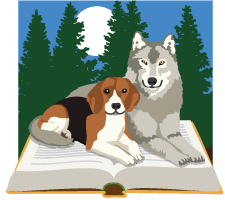

 Jen
Jen






 Sally
Sally






















 This collection is both new poems and previously published poems. If you haven’t discovered this two-time U.S. Poet Laureate and Pulitzer Prize winner, I recommend you do!
This collection is both new poems and previously published poems. If you haven’t discovered this two-time U.S. Poet Laureate and Pulitzer Prize winner, I recommend you do!